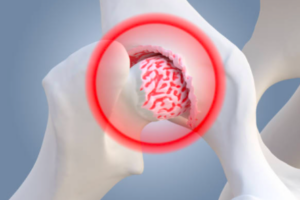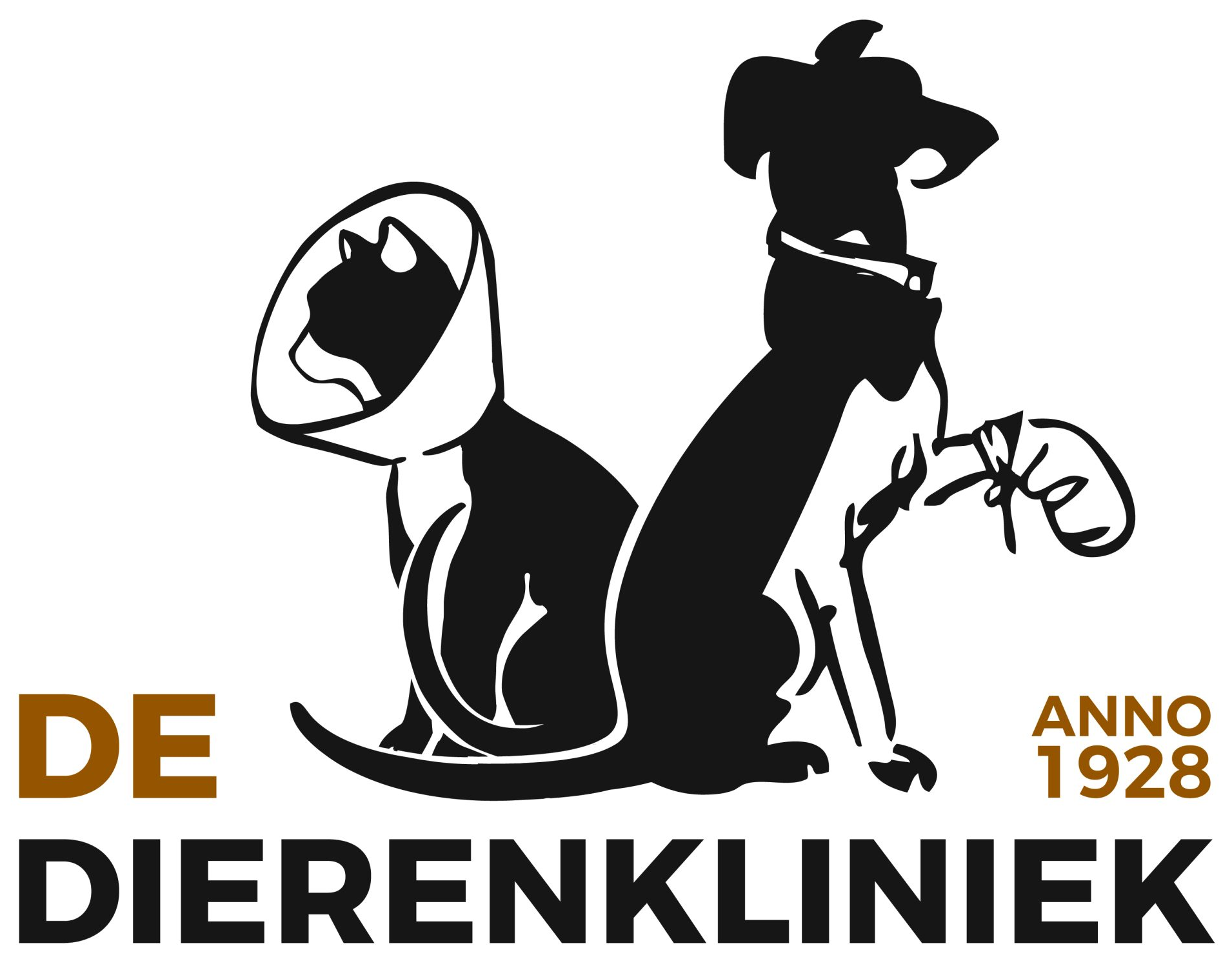Osteoarthritis in dogs
Osteoarthritis is unfortunately quite common in dogs. It generally develops in older dogs, but some young dogs can also be affected. Below, we explain what osteoarthritis is, the symptoms you may notice, and what can be done to support your dog.
What is osteoarthritis in dogs?
Osteoarthritis is a form of cartilage wear in the joints. Normally, cartilage allows bones to move smoothly over each other. In osteoarthritis, there is little or no cartilage left in the joint, causing the bones to rub against each other when moving. This leads to pain and eventually the formation of extra bone in the joint. As a result, the joint becomes stiffer, and your dog’s mobility is reduced.
What are the causes of osteoarthritis?

Osteoarthritis can develop for several reasons. In senior dogs, it is usually the result of years of normal joint use. In younger dogs, osteoarthritis can occur due to joint overuse from excess weight or excessive activity, as well as from trauma or abnormal joint formation. Osteoarthritis can also develop to some degree after joint surgery.

Orthopedics
De Dierenkliniek offers a variety of treatments within orthopedics. Read more about them here!
Read more
What are the symptoms of osteoarthritis?
The most characteristic symptom of osteoarthritis is so-called “morning stiffness.” This is when your dog moves stiffly, slowly, or appears limping after resting or sleeping. Once your dog starts moving and the joints warm up, the stiffness usually decreases.
Another common symptom is that dogs with osteoarthritis are less willing to jump on or off furniture, and climbing stairs becomes more difficult. The severity of your dog’s symptoms can vary throughout the day. For example, symptoms may worsen in cold weather or after a day of increased activity. Rest often helps reduce stiffness.
What are the consequences of osteoarthritis?
Osteoarthritis is a painful condition that, in addition to causing pain, also reduces your dog’s mobility. Unfortunately, osteoarthritis cannot be cured, but the progression can be slowed, and the symptoms can be managed or alleviated. This means that your dog will require lifelong treatment. Details of the treatment can be found further on this page.
How do we diagnose osteoarthritis?
Your description of your dog’s lameness and other specific complaints, together with a thorough physical examination by the veterinarian, can provide a strong indication of osteoarthritis. To confirm the diagnosis with certainty, we take X-rays of your dog’s joints.
In most cases, rest is initially recommended, sometimes in combination with pain relief or anti-inflammatory medication.
Treating osteoarthritis in dogs
With the right measures, the symptoms of osteoarthritis can be significantly reduced. Below, we outline general recommendations. The exact treatment plan for your dog will be tailored in consultation with you.
Weight management
Even if your dog is not very overweight, losing weight can have a very positive effect on the severity of osteoarthritis. In some cases, symptoms may even disappear completely with weight loss alone. For this reason, weight management is considered one of the most important therapies for osteoarthritis. The heavier your dog, the more stress is placed on the joints. Our veterinarians and veterinary assistants can help you achieve your dog’s optimal weight. If you need guidance or advice on weight loss, our specialists can provide tailored nutritional recommendations.
Adjusting exercise
When a joint has to move a lot or perform extreme movements, it can cause more discomfort. However, complete rest is also not beneficial, as it can make your dog stiff (and eventually overweight). You want to encourage your dog to move, but in a way that is not too stressful on the joints. Straight-line movements are generally best for dogs with osteoarthritis. Examples of straight-line movement include walking on a leash in a straight line or even jogging a short distance alongside a bike.
Non-linear movements, such as chasing sticks or balls, can be stressful because dogs make sudden movements that put extra strain on joints that are no longer functioning optimally. Playing freely with other dogs is also less advisable. However, dogs still need to be dogs, so in moderation, this type of play can be allowed. Keep in mind that after intense exercise, your dog may be a bit stiffer the following day.
Supplements or special diets
Some supplements are known to have a positive effect on osteoarthritis symptoms and can help slow the progression of the disease. This includes glucosamine, chondroitin, and omega fatty acids. These can be given as separate supplements, but there are also products that combine them. Flexadin® is one example. It only needs to be given once a day, providing all the additional nutrients needed to support the joints.
There is also special food that already contains these supplements, so you don’t need to give anything extra. We usually recommend Hill’s J/D for this purpose.
Medication
If your dog continues to experience pain despite the measures above, or if symptoms worsen acutely, it may be necessary to use pain relief with anti-inflammatory effects. For long-term use, we recommend a pain reliever with as few side effects as possible.
We usually use meloxicam for osteoarthritis problems. This can be given continuously for severe symptoms, but it can also be used only on days when your dog has been very active and experiences more discomfort than usual. If your dog still suffers from osteoarthritis pain despite these painkillers, there are other alternatives.
A relatively new treatment (2021) for osteoarthritis pain in dogs is Librela®. Librela contains an antibody that specifically targets the protein NGF (Nerve Growth Factor). NGF is responsible for transmitting pain signals from the joints to the brain. By blocking NGF, pain is reduced and the dog’s mobility improves. Librela is administered via a subcutaneous injection and its effect lasts for one month.
Alternative therapies
Physiotherapy or hydrotherapy is sometimes successfully used for dogs with osteoarthritis. These therapies are primarily aimed at building muscle without putting additional strain on the joints. For some dogs, this can be very beneficial. Laser therapy is also gaining popularity for osteoarthritis. While the scientific evidence is not yet conclusive, experience shows that some dogs respond exceptionally well. Laser therapy can have anti-inflammatory effects, improve blood circulation, and reduce joint fluid, all of which can help reduce osteoarthritis discomfort. We offer laser treatments in our clinics and are happy to provide more information.
Surgery
In extreme cases, surgery with a joint prosthesis may be an option, most commonly performed on the hip. Unfortunately, this is not possible in all cases.
Can osteoarthritis in dogs be prevented?
There are several measures that can help prevent or delay osteoarthritis:
- Keep your dog at a healthy weight. Excess weight puts more strain on the joints, increasing the risk of osteoarthritis.
- Ensure that growing puppies get the right amount of exercise. Too much activity in young puppies can cause developmental problems in vulnerable areas, such as the elbows and hips. For adult dogs, the amount and type of exercise are also important.
- Provide your dog with the appropriate nutrition. Puppies, adult dogs, and senior dogs have different nutritional needs, which are essential for joint development and support.
- If you suspect osteoarthritis, contact a veterinarian immediately. Starting treatment as early as possible maximizes the chances of slowing the progression of osteoarthritis and delaying the onset of symptoms.
How long can a dog live with osteoarthritis?
We are often asked how long a dog can live with osteoarthritis. Unfortunately, there is no definitive answer. Osteoarthritis cannot be cured, but fortunately, there are more and more ways to improve the quality of life for dogs with osteoarthritis. Various treatments and options are available to slow the progression of the disease and reduce pain. In this way, many dogs can still enjoy a comfortable and largely pain-free life despite having osteoarthritis.
When should I have my dog euthanized due to osteoarthritis?
Deciding when it is better to euthanize your dog is an extremely difficult choice. Quality of life is often the determining factor. In some cases, osteoarthritis becomes so severe that treatment no longer provides relief. The pain and mobility issues caused by osteoarthritis can leave your dog in near-constant discomfort. In such cases, this is considered a poor quality of life, and euthanasia may be the most compassionate choice.
If you have any questions about this topic, please do not hesitate to contact us.

